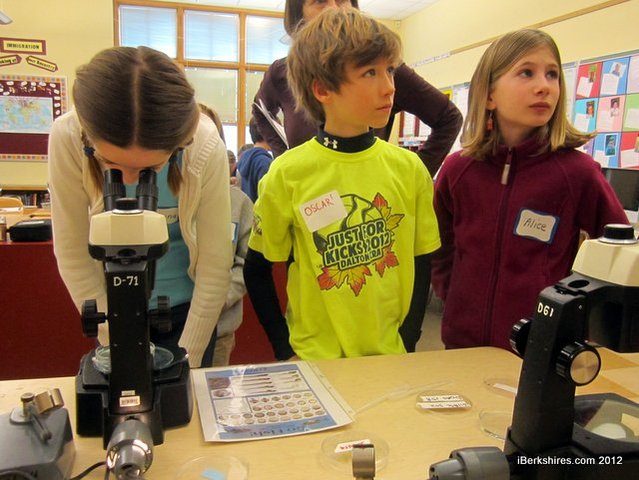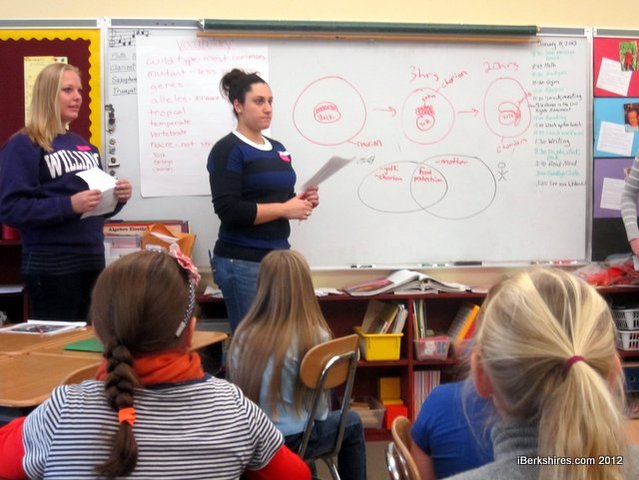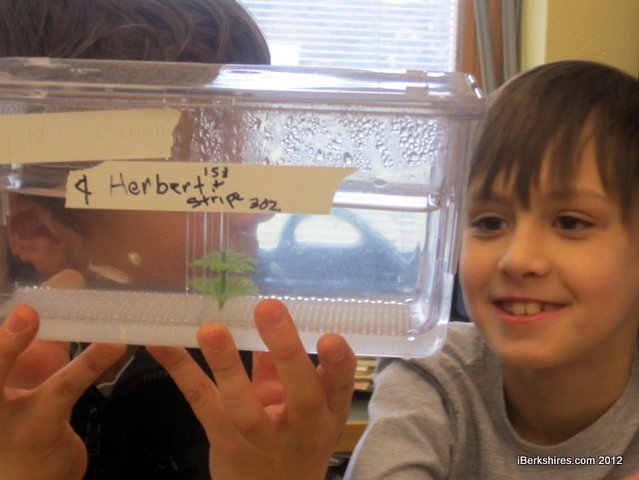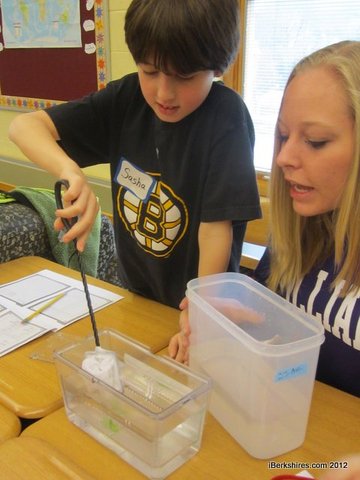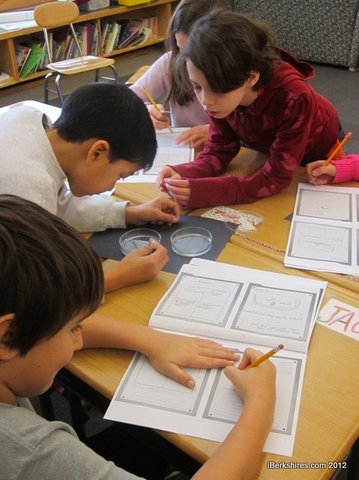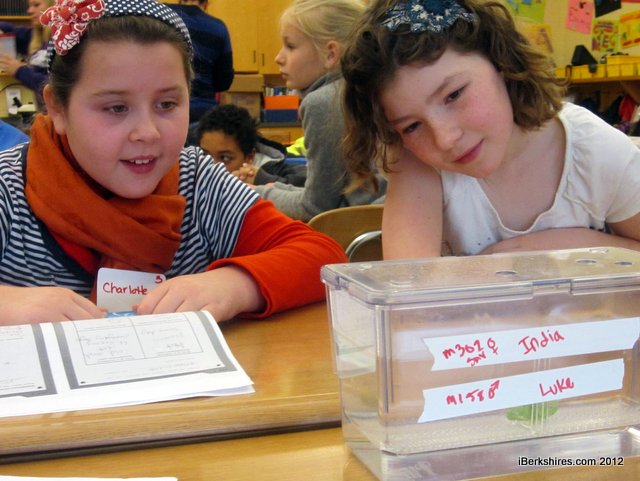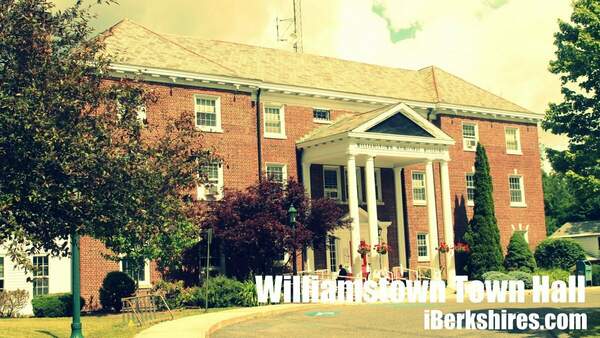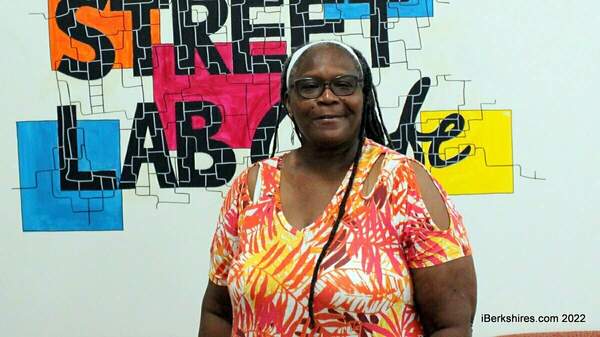BioEYES Program Introduces 4th-Graders to Science
|
Children watched the zebrafish's transparent eggs hatch and then studied them for genetic differences. |
WILLIAMSTOWN, Mass. — Each year hundreds of thousands of students in thousands of classrooms learn about biology by studying animals that have died.
This week in North County, fourth-graders at two schools learned studied life at its very beginning.
For the fourth straight year, Williams College neuroscience professor Martha Marvin is bringing the BioEYES program to Williamstown Elementary School. And earlier this month, she brought the program for the first time to North Adams' Greylock Elementary.
Under the watchful eye of Marvin and eight Williams students, fourth-grade pupils at both schools mated zebrafish on the first day of the weeklong program.
Then, thanks to the fish's unique transparent eggs and rapid gestation period, the children were able to watch the embryos develop throughout the week and use the offspring to study genetic probability.
Marvin said fourth grade is the right time for the program, which was developed by scientists and educators at universities in the United States and Australia, including the University of Pennsylvania.
"I think the kids are really starting to think concretely about science, and they really want to see it in action," Marvin said. "They want to touch things. They want to look in microscopes. They don't want to just read about it in a book.
"That makes it very exciting for them, that they're working with live animals that grow and change throughout the week. And the educational standard for fourth grade is looking at life cycle. They're seeing a complete life cycle here with adults and the embryos, and they watch the embryos develop, then they're going to hatch and start swimming around by the end of the week."
On Tuesday, children at WES got their first look at the fertilized eggs produced by the fish they mated the day before. After carefully removing the "mothers" and "fathers" from the container they shared for 24 hours, the children were able to harvest the eggs and examine them under microscopes borrowed from the college.
"Gross ... but really cool," was a typical reaction as they watched the developing embryos wriggle inside the eggs.
After observing the specimens, the children drew pictures and wrote brief descriptions of their observations in the lab books supplied by BioEYES.
Marvin said there are interdisciplinary aspects to the BioEYES curriculum that make it a good tool for the classroom.
"There's the drawing, there's math in there, there's a column graph they have to do," she said. "There's also a lot of opportunities for language arts if the teachers choose to add that module. (Williamstown Elementary's) Kate Seid's class last year wrote thank-you notes. Students have written stories.
"Then there's also the vocabulary that's in their booklet, the crossword puzzle and a word search as well."
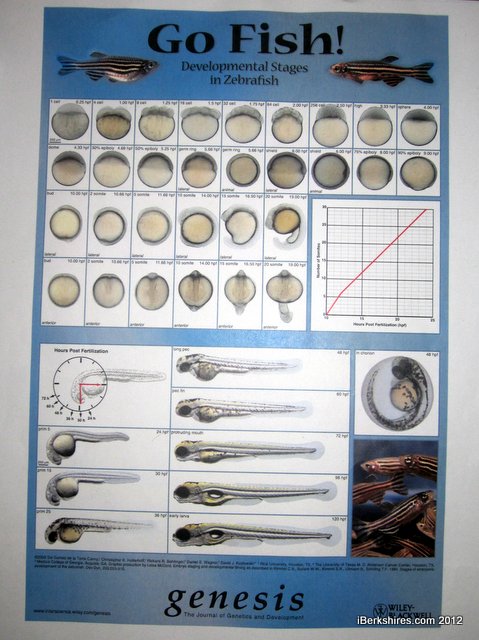 |
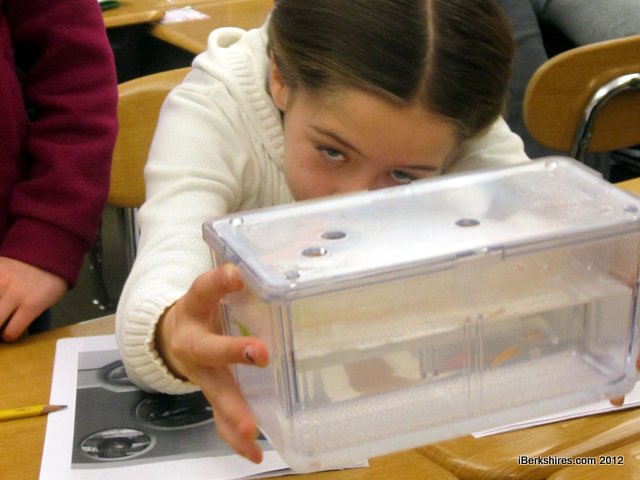 |
And for local students, Marvin modified the fourth-grade curriculum by incorporating material from the seventh-grade lesson plan on Punnet squares, a diagram used to predict genetic variability.
The children bred one striped zebrafish with one unstriped fish and will learn to predict what characteristics will be transmitted to the progeny.
"That's something that's a stretch for some of the kids, learning about the matrix of a Punnet square," Marvin said. "It's an important conceptual notion that there are recessive genes and how to plot what your prediction will be.
"They make a hypothesis, they come up with predictions, and on the fourth day they look at the pigmentation of the embryos to see how it matches with their predictions."
Marvin said she was impressed with the work done by the Greylock pupils last week, and she would enjoy taking BioEYES to other schools in the area if she can coordinate things with the college students' schedule. The two January sessions coincide with Williams' Winter Study period, a session with short-term classes and a little more scheduling flexibility.
Marvin also has conducted a BioEYES program with biology classes at Mount Greylock Regional High School.
The lessons learned can help spark or maintain an interest in science as a possible career, but its benefits go beyond even that, Marvin said.
"It's important not only for kids who might be thinking about a science or technology career but also for the general public," she said. "As voters, you're asked to evaluate science quite often — environmental impact reports, whether there is climate change or not. You're asked to evaluate these things. The more engaged you are with science, the more qualified you feel to make those kinds of evaluations.
"That's why it's so important to me."
Tags: biology, life sciences, school program,

